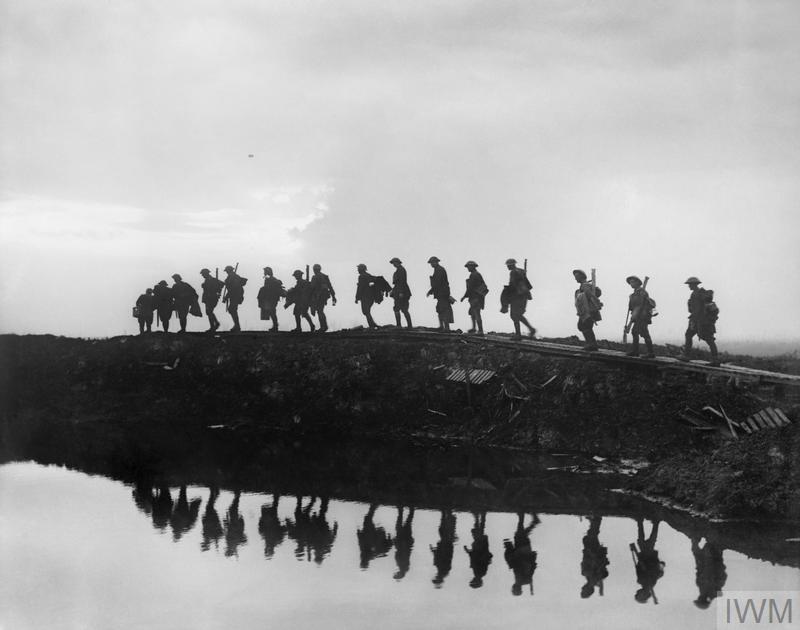Remembering the fallen
Laura Clouting: “For Britain, the casualties inflicted during the First World War had never been surpassed. Come the end of the war, there was a real tension about whether or not to look back and to find ways to commemorate that human cost, or whether or not to celebrate victory and to move on with life.
Families, communities and the nation sought ways to remember the dead. During the war, a sweeping decision was made. The bodies of the British and Empire War dead would not be brought home for burial. They were to stay on the former battlefields. With victory still uncertain, in January 1918, a revolutionary report was authored. This report, laid out in immense amount of detail, a vision for how these permanent cemeteries would look. We are very familiar with this site today and the results of this report in the rows of white headstones, which look identical to one another.
Regardless of race, rank or religion, everybody was to be commemorated in the same way, and this became really a democracy of death. But with those cemeteries so far from home, and with so many of those who had died having no known grave, alternative forms of remembrance were needed. Communities from villages, towns and cities to sports clubs, schools and churches debated how best to remember their war dead. In the 1920s, around 40,000 war memorials were constructed across the country. They came in all sorts of different shapes and sizes. The one in Loughborough consisted of a dramatic tower with 47 bells. From scholarship funds to hospitals, other people prefer to pay tribute to the war dead by helping the living. Without a body to bury at home, many families looked for other ways to remember their loved ones who had been killed during the war.
A dead soldier's personal possessions sent back to his family could become precious keepsakes. Private Albert Tattersall died of wounds inflicted on the first day of the Battle of the Somme. His personal possessions, which he had carried with him at the frontline, were sent back to his family. They included his pipe, cigarettes, a small Bible and a shaving mirror and his ID tags. They kept them safe, eventually donating them to the museum. Those who had survived the war on the fighting fronts did not forget what they had experienced. They formed veteran's associations and at organised reunions, the camaraderie forged during wartime continued. They were often lively and raucous affairs at odds with the increasingly sombre public commemorations.
The Cenotaph in London has become the focus of national remembrance. It was originally designed as a temporary wooden structure to celebrate peace in 1919. This sketch was drawn by its architect, Sir Edwin Luchins over dinner one evening. The Cenotaph proved so popular with the public that it was decided to rebuild it the following year made of stone. It was unveiled on Armistice Day 1920. Ever since the war ended 100 years ago, it has been remembered. The popular warning, lest we forget, holds firm for now. But for how long, and in what ways will we continue to remember this increasingly distant war?”
The human cost of the First World War has become one of its defining legacies. It was a global conflict that changed the lives of millions of people.
Lest We Forget? at IWM North explored how the war has been remembered and the ways in which people have commemorated the dead – from the intensely personal, private rituals to the sombre national ceremonies.
In this video, exhibition curator Laura Clouting discusses the themes the exhibition covered and highlights some of the objects on display.
She explains why the Kenyon Report, which outlined the need for a ‘common plan’ for the commemoration of the war dead in cemeteries far from Britain, was so revolutionary and looks at how local communities remembered their dead. The Loughborough Carillon Tower was just one of thousands of memorials unveiled during the 1920s.
The exhibition also explored the ways in which individuals, families and friends remembered those they had lost - from veterans holding reunion dinners to families keeping the belongings of the fallen safe for years.
One poignant example of this are the personal possessions of Private Albert Tattersall, who was just 23 when he died after being injured on the first day of the Battle of the Somme.
Lest We Forget? also examined how remembrance is represented in popular culture and how forms of state remembrance have evolved, including how the concept for the Cenotaph changed from initial design to final construction in 1920. Visitors could see one of the original sketches drawn by architect Sir Edwin Lutyens.
The objects featured in this video were on display as part of Lest We Forget? at IWM North from 27th July 2018 until 24th February 2019.
![Sommerschau über Europa 1915 [Summer Show over Europe 1915]](https://media.iwm.org.uk/ciim5/279/156/large_000000.jpg)

